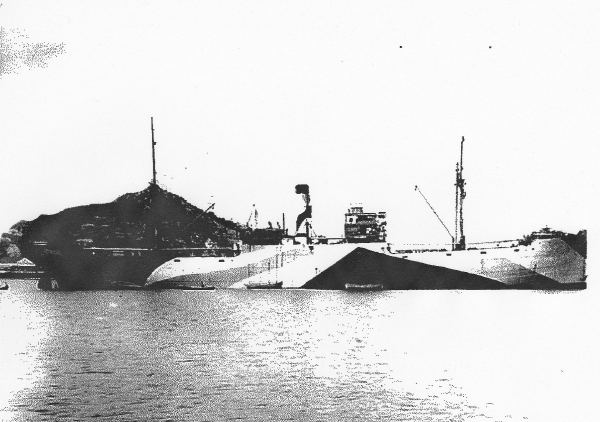| Suez Maru |
Suez Maru

| Operator | Kuribayashi Shosen |
| Classification | Cargo ship |
| Gross tonnage | 4,693 tons |
| Speed | 12 knots |
| Departure point | Ambon, Ceram Is. |
| Departure date | 25 November 1943 |
| Destination | Surabaya, Java Is. |
| No. of POWs | 546 |
| Location of disaster | Near Kangean Island, Java Sea (06-22S, 116-35E) |
| Date of disaster | 29 November 1943 |
| POW casualties | 546 |
| POW survivors | Nil |
| Photo | Courtesy of Kuribayashi Shosen |
On 23 November 1943, 650 POWs who had seriously injured their health due to hard work, starvation, diseases, etc., were gathered in Ambon and would be sent to Java aboard Suez Maru. The forward two holds were occupied with sick Japanese patients, and two aft holds with 546 sick POWs (Most of them were British. About 20 stretcher cases)
On 25 November, a convoy consisting of Suez Maru and Nichinan Maru escorted by Mine sweeper No. 12 set off from Ambon. A few days thereafter passed uneventfully. On the morning of the 29th, however, at around 05:25, when the rain that had been falling through the night stopped, and the visibility improved, the USS Bonefish, operating approx. 70 NM northeast of Kangean Island, sighted two ships steaming westward to either Surabaya or Batavia, emitting heavy black smoke. Although Bonefish got pretty close to the ships, apparently they were unaware of being stalked. Just past 08:17, the four torpedoes Bonefish fired ran full tilt directly at Suez Maru. Seeing the torpedo wakes, she increased speed and attempted to evade them. However, one torpedo hit her amidships and another under the main aft-mast, and the ship immediately began sinking from the stern. The POWs climbed out of No. 3 hold, but none from No. 4 hold. The guard leader ordered a Korean guard to lower the rafts and pass the word to the POWs to abandon ship. As the ship listed heavily, the leader and the last group of the crewmembers jumped into the water. It is believed that Suez Maru went down to the bottom at around 09:17.
After drifting in the water for hours, the leader was rescued by the Mine sweeper No. 12, aboard which was crowded with wet, exhausted, and wounded Japanese. Since his ship was already full, the skipper was very much against rescuing any POWs. Although there were disagreements between the skipper and the leader regarding disposition of the POWs at the beginning, the skipper overrode the opposition of the leader. Beginning at around 16:00, slowly circling around the waters where some 250 POWs were floating, holding onto some wreckage of the ship, they strafed the area with 12 rifles and nine 25 mm heavy machine guns. The nearby water stained with blood. After sundown, on their way over to Batavia, the skipper reported by radio that since the POWs had attempted to escape, they were executed. Although 93 Japanese soldiers and 205 patients had been rescued, 69 died. None of the 546 POWs survived in this incident. Even though it was war, the leader of the guards said that he was stung by conscience for having killed unresisting POWs.